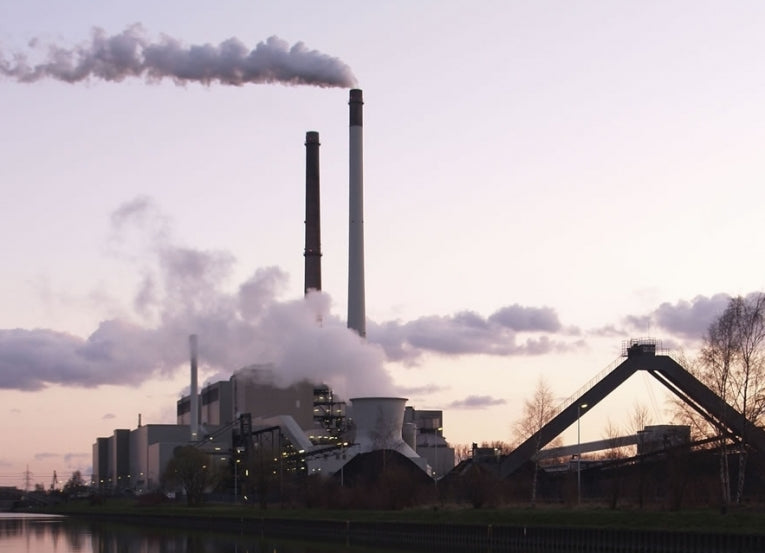American researchers are using computer modelling to increase carbon capture in power plant flues. The computer modeling shows which molecular candidates are best at taking carbon dioxide, molecular nitrogen and other greenhouse gases from power plant flues.
Researchers from the U.S. Department of Energy (DOE)'s Lawrence Berkeley National Laboratory (Berkeley Lab), the University of Minnesota and the University of California (UC) Berkeley have developed the pioneering modelling.
For the first time, the modelling provides accurate simulations of how flue gases and a special kind of gas-capturing molecular systems called metal-organic frameworks (MOFs) interact.
The system should quicken the search for more cost-effective and efficient ways to burn coal without increasing climate change.
The development of the modelling was led by University of Minnesota chemistry professor Laura Gagliardi and Berend Smit, who is an international expert on molecular simulations. He also holds joint appointments with Berkeley Lab's Materials Sciences Division and UC Berkeley, directing Berkeley's Energy Frontier Research Center.
Berend Smit says, "We've developed a novel computational methodology that yields accurate force fields - parameters describing the potential energy of a molecular system - to correctly predict the adsorption of carbon dioxide and molecular nitrogen by MOFs with open metal sites.
"All previous attempts at developing such a methodology failed and most people gave up trying, but our model is applicable to a broad range of systems and can be used to predict properties of open-site MOFs that have not yet been synthesized."
The pair has written a paper in the journal Nature Chemistry that describes the research, entitled Ab initio carbon capture in open-site metal-organic frameworks.
The co-authors are Li-Chiang Lin, Sergey Maximoff, Allison Dzubak, Joseph Swisher, Jihan Kim and Roberta Poloni.
As America holds the world's biggest estimated recoverable reserves of coal, it is likely that coal-burning power plants will remain an important source of electricity generation.
But there are concerns that burning coal fuels global climate change, so an urgent cost-effective method is needed of removing greenhouse gases from flues before they enter the atmosphere.
Current technologies proposed are based on amines or other molecular systems, but would use around a third of the energy produced by the power plants. This so-called "parasitic energy" would rapidly increase the cost of electricity.
MOFs are crystalline molecular systems that serve as storage vessels and act like sponges to capture and contain carbon dioxide and other gases. They have a metal oxide centre that is surrounded by organic "linker" molecules, which form a very porous three-dimensional crystal framework.
When a solvent molecule is applied as MOF is formed and subsequently removed, an unsaturated "open" metal site MOF is formed with a very strong affinity for carbon dioxide.
Berend Smit explains, "MOFs have an extremely large internal surface area and, compared to other common adsorbents, promise very specific customization of their chemistry and could dramatically lower parasitic energy costs in coal-burning power plants.
"However, there are potentially millions of variations of MOFs and since from a practical standpoint we can only synthesize a very small fraction of these materials, the search for the right ones could take years. Our model saves this time by enabling us to synthesize only those that are most ideal."
Models of force fields created to predict adsorption properties of other MOFs often underestimate properties for open metal site MOFs by two times. The reason for this is that open metal site MOFs impose different chemical environments from the MOFs that were taken into account when force field models were initially developed.
Berend Smit and his team overcame the challenge of open site MOFs by using quantum chemical calculations and a plan based around the non-empirical model potential (NEMO) methodology.
"Under this NEMO methodology, the total electronic interaction energy obtained from quantum chemical calculations is decomposed into various contributing factors, such as electrostatic, repulsive, dispersion and so on," Berend Smit says.
"With the model we developed we were able to reproduce the experimental adsorption isotherms of carbon dioxide and molecular nitrogen and correctly predict the mixture isotherms at flue-gas conditions in Mg-MOF-74, an open metal site MOF that has emerged as one of the most promising for carbon dioxide capture."
Smit and his colleagues aim to go on and develop force field models for broad combinations of different metals, topologies and linkers.
They have already begun work to apply the model to new amine-based systems that can remove carbon dioxide from flue exhaust.
This research was backed by DOE's Office of Science, partly through the Center for Gas Separations, an Energy Frontier Research Center, the DOE's Advanced Research Projects Agency-Energy and the Deutsche Forschungsgemeinschaft.
Researchers used Berkeley Lab's National Energy Research Scientific Computing Center and Molecular Foundry.










